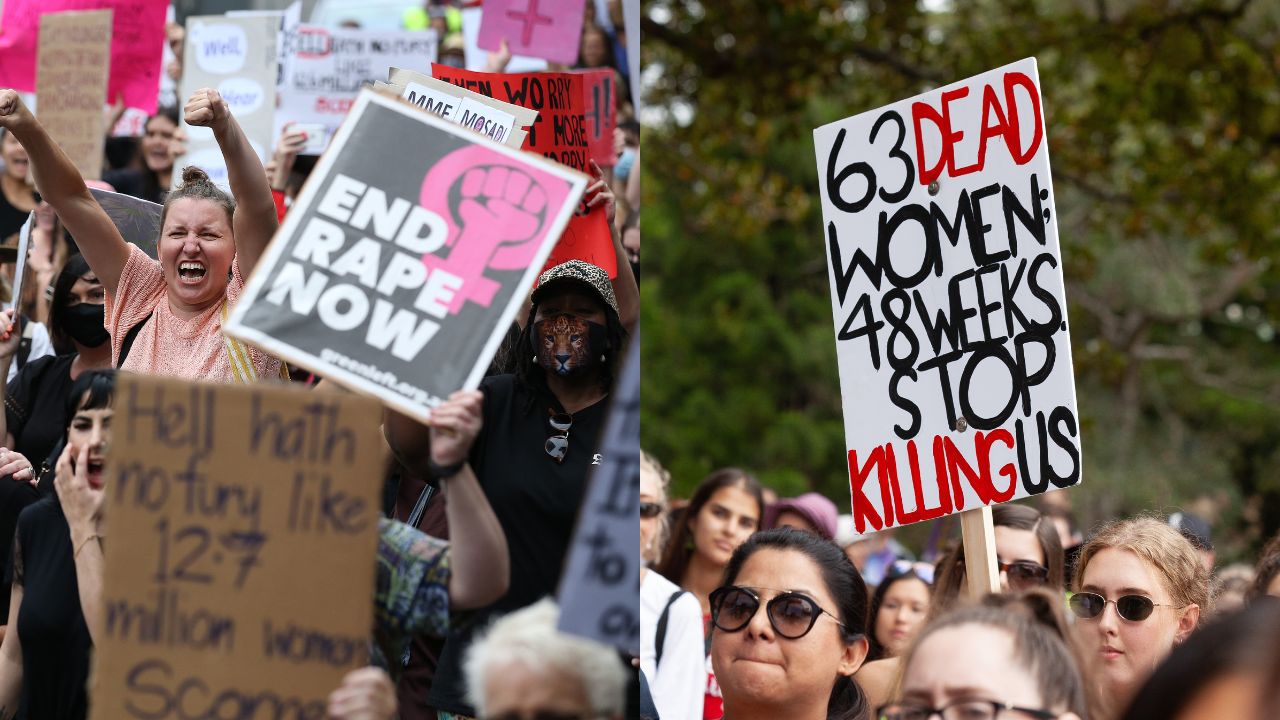
either
physical
sexual
people) reported experiencing violence since the age of 15.
When you break those numbers down to physical or sexual violence, the numbers take on a gendered turn: 31 per cent of women experienced violence compared to 42 per cent of men. However, 22 per cent of women experienced violence, compared to 6.1 per cent of men. That means women experience sexual violence at a rate three times higher than men.
To put it in other words, a little more than one in five women suffered sexual violence, compared to one in 16 men. These numbers aren’t surprising, but they’re definitely heartbreaking.
Unfortunately, the stats don’t stop there. One in five women (20 per cent) experienced stalking, compared to 6.8 per cent or one in 15 men.
Men were more likely to experience violence by a stranger (30 per cent compared to 11 per cent), while 35 per cent of women encountered violence by someone they knew.
The statistics regarding intimate partner violence were also skewed to suggest women are significantly more likely to experience violence by a relative than men.
More than one in four women (27 per cent) experienced violence by an intimate partner or family member, compared to one in eight (12 per cent) of men.
If you limit this to just intimate partners, it’s still one in four women — which is a pretty stark contrast when compared to one in 14 men. Here, women experienced violence from an intimate partner at three times the rate of men.
The report also found that people were more likely to see their mother abused while they were children than their father (8.9 per cent compared to 3.7 per cent).
Interestingly, while the overall rate of violence that both men and women experience remained pretty stable over the years the census had been taken, it appears domestic violence rates actually decreased — though we’ll break down why it’s not so simple in a moment.
The rate of cohabiting partner violence decreased from 1.7 per cent to 0.9 per cent in 2021-2022, driven by a decrease in the rate of physical violence. The rate of sexual harassment also declined for both women (from 17 per cent in 2016 to 13 per cent in 2021-22) and men (from 9.3 per cent to 4.5 per cent).
According to Monash’s Gender and Family Violence Prevention Centre director , we should be cautious about these statistics because they don’t represent all the types of abuse women experience.
“The forms of intimate partner violence are evolving and we’re not necessarily capturing all of the different forms of abuse in our current measures,” she told .
“It’s really important for the survey questions to evolve with perpetrator tactics to capture things like technology-facilitated abuse.
“We also know that all forms of intimate partner violence are under-reported. The survey relies on self-reported victimisation data so that’s something to keep in mind.”
She also noted that the Australian government is yet to prioritise addressing domestic violence with the same amount of vigour as potential foreign threats.
“We’ve seen the federal government in the last week asked significant questions about ,” she said.
“Less than one per cent of that has been committed to tackling violence against women.”
Last year, more than one women a week was killed in an act of violence, with .
This year, 13 women have already been killed in acts of violence, with . The majority of these cases have charged men known to them with their murder. We are 10 weeks into the year.
Intimate partner violence may have decreased according to these stats, but they’re still too high and something needs to be done about it.
Kate Fitz-Gibbon SBS News their commitment of over $300 billion to submarines 10 of these women killed in the same 20 days two women killed in just the last week Help is available. If you require immediate assistance, please call 000. If you’d like to speak to someone about domestic violence, please call the 1800 Respect hotline on 1800 737 732 or chat online . Under 25? You can reach Kids Helpline at 1800 55 1800 or chat online.13 Australian women killed in 2023 and 66 women were killed in 2022.
— Sherele Moody (Femicide Researcher) (@ShereleMoody) March 14, 2023
If you think the government cares, consider this:
$216m is the total Federal violence against women funding in 2023.
$368b is the total Federal submarine funding in 2023!
If only women were submarines!
The post ABS Released Its Latest Stats On Rates Of Physical And Sexual Violence & The Results Are Grim appeared first on PEDESTRIAN.TV .







